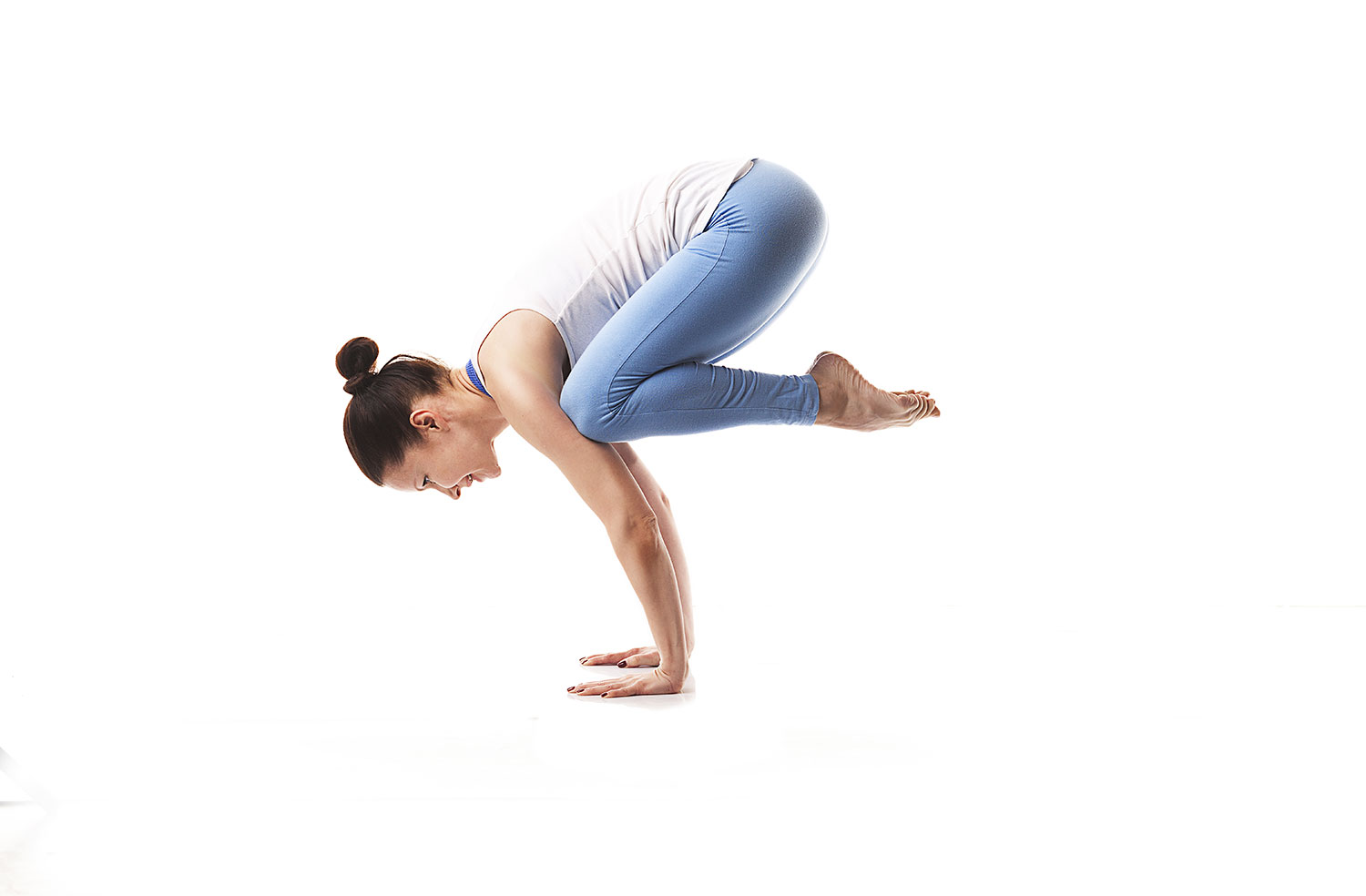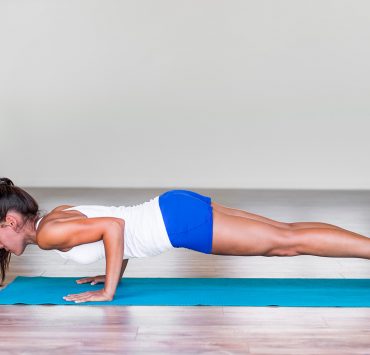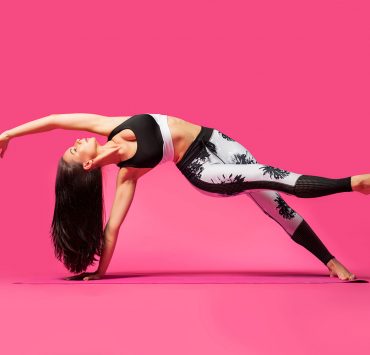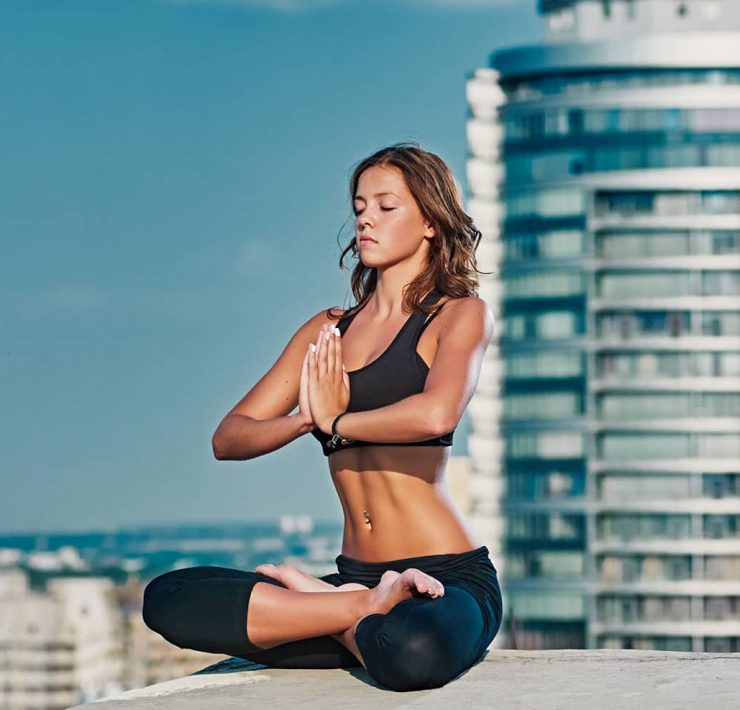
Catherine Perez is a celebrated yoga instructor in her home…
Kakasana, also referred to as the Crow pose, is a balancing asana that is often used in hatha yoga. There are a few variations of the pose, but the premise is the same – your hands are planted firmly on the floor as your shins are moved to rest against the upper arms. And lastly, the feet are lifted up off the ground as you fly into the posture. The pose resembles that of a crow in a sitting position.
Balancing poses have a long history, dating back to the 17th century where the Bakasana, the Crane variation of the Crow, was one of the poses taught to practicing yogis by Shiva. Hatha yoga uses a variety of physical and balancing asanas in its practice. These asanas, such as the Kakasana, are used to keep the physical body healthy and challenged. Yogis believe that balancing postures guide the physical body towards spiritual enlightenment.
Many yogis are under the impression that the Crow and Crane pose are the same. Although both have the same basis of a balancing pose, there is one difference between the two – the position of the elbows. Crow pose is done with your arms bent while Crane (Bakasana) is done with straight arms. Doing the Crow pose is your final step to mastering the Crane pose, which is slightly more difficult and challenging.
History of the Crow Pose

The Crow pose gets its name from a Sanskrit word, Kakasana. Kak means “crow”, and asana means “seat” or “posture”. The crow has a long and varied place in history – for some the crow is seen as a symbol of death.
Different cultures have their own unique representation of the crow. In Hindi, the crow is an ancestral symbol while in Greek and Roman myths, the crow was one of the animals sacred to the god Apollo. Both Tibetan and Buddhist cultures consider crows to be the earthly manifestation of Mahakala, who protects the righteousness of all on earth.
Tradition also has it that the crow, as well as the crane, was considered to be a messenger from the gods. It’s believed that black crows were present at the birth of the first Dalai Lama. Because of their ability to fly, these crows were able to transcend earth and fly through into the next world, connecting the expanse between this world and the infinite. The crow is also said to symbolize the transition of change, of moving from one phase to another so there’s room for spiritual growth and development.
The Benefits of Kakasana

As with all yoga poses, Kakasana has some specific benefits, both physical, mental, and spiritual. The posture works out your entire body and mind, including your core muscles, arms, legs, and upper back. Crow is also good for opening up the hips and toning the abdomen.
Some of the physical benefits of Crow pose include:
- Tones the abdominal and back muscles
- Stretches the groin area and upper back and shoulders
- Strengthens the arms, wrists, and forearms
- Helps with the digestive process
- Alleviates heart burn and acid reflux
- Eases lower back pain
The mental and spiritual benefits of Kakasana include:
- Encourages inner focus and concentration
- Strengthens the second chakra known as the sacral chakra – the ability to be open to new experiences and connections
- Builds awareness and confidence
- Inspires connection with your feelings and emotions
- Boosts creativity
Spiritual Empowerment of Crow Pose

Mastering the Crow pose is more than just having the physical strength to get into position and maintain the pose. Kakasana is about transcending the physical and focusing on the pose, trusting that you can “fly” and take off in flight into the pose.
When trying the posture for the first time, you may feel intimidated to get into position. What if you don’t have the strength and fall? Putting all of your body weight onto your hands and balancing with your feet off the ground can seem unnatural and almost impossible to achieve. This is where the trust comes in – the belief in yourself that you can move into the pose and remain there, feeling your strength and trust in yourself soar.
Much of Kakasana is about facing those doubts and fears. Start slowly and breathe deeply, trusting in yourself. This self-trust gets you ready to take a chance – lift first one foot off the floor and rest it against your upper arm while balancing on the toes of your other foot. Keep breathing slowly and deeply, focusing on your third eye as you build on feelings of trust and physical strength. With one last deep breath, “fly and lift off” as your other foot lifts up off the ground. Remain here in Crow pose, recognizing that you’ve transcended your doubts and have connected with a higher spirit of both personal and universal freedom.
As you come out of Crow pose, either with a thud to the floor or gracefully like a bird, you’ll have a better understanding of who you are and what you’re capable of. Your Crow pose may not be “perfect”, but with practice and continuing trust in yourself, you’ll be able to experience the benefits of Kakasana.
Poses to Prepare for Kakasana
Before moving directly into Crow pose, it can be helpful to prepare with other yoga poses, building up to the more challenging Kakasana. Practice these poses to build up to the strength and balance needed for the Crow.
Ananda Balasana — Happy Baby Pose

Practicing the happy baby pose can help to warm up your hips and back. Left your legs and position your body in the shape of Crow pose and hold for a few minutes.
Marjaryasana — Cat/Cow Pose

Another easy posture that helps you prepare for the spine position needed in Crow, is the Cat pose. Before entering Kakasana, practice the Cat for a few minutes, holding your breath as you flow between Cat and Cow pose, deeply rounding your spine each time.
Virabhadrasana III — Warrior 3 Pose

One of the most important concepts of the Crow pose is counterbalance. It can be easier to use simple postures to learn what this counterbalance feels like. Warrior 3 is a good pose for this – it helps to improve your posture and balance while at the same time strengthen the legs, shoulders, and back muscles.
Utthan Pristhasana — Lizard Pose

The Lizard pose is a good hip opener which can help to prepare you for the flexibility needed for Crow pose. Practice this pose with a slow and steady breath, easing into the posture and remaining there for a few minutes as your hips open.
Chaturanga Dandasana — Low Plank Pose

One of the best postures for developing both core and arm strength is the Chaturanga Dandasana. Also known as the Low Plank, this pose gets your hands on the floor while being supported by the toes as you hold your body parallel to the ground.
Anjaneyasana — Crescent Pose

This lunge pose is good way to remove the tension and tightness in your hip flexors and prepare the hips for opening in the Crow pose. Focus on going deep into the stretch and breathing, remaining in the posture for a few minutes on each side.
How to Practice Crow Pose

Enter the Crow pose slowly and with grace. If you’re unable to fully execute the pose, it’s okay to fall out and begin again. Here are the steps for practicing Kakasana:
- Stand at the top of your mat in Tadasana, Mountain Pose. With your arms relaxed by your sides, your feet should be in position at hip width.
- Come into a squat by slowly bending your knees and lowering your hips. While squatting, keep your feet as close together as you can. Open your thighs so they’re just a bit wider than your body. If you find your heels lifting off the floor you can fold the mat to place underneath them.
- Push your body forward slightly while placing your upper arms along the inside of your knees. Bring your hands into the prayer position. This beginning stage of Crow pose is Malasana, the Garland pose. Rest here for a minute or two.
- Slowly place your hands on the mat with fingers spread, keeping them palm down at shoulder distance. Push slightly into your hands, with the weight evenly distributed across both.
- Push your shins up against the back of your arms. Then slowly pull your knees into your underarms as closely as you can.
- While leaning forward, lift onto the balls of your feet. While keeping your back rounded, pull in your stomach muscles. Your lower back and tailbone should be tucked into position towards the heels.
- Find a focal point between your hands on the floor directly in front of you or slightly ahead.
- While leaning forward just a bit, lift both your feet off the floor and pull your heels in toward your bottom. If you’re unable to lift both feet at once, start with first one and then lift the other.
- Balance your upper body and legs on the back of the upper arms. If possible, touch the big toes together.
- Hold the Crow pose for one minute before releasing back into Malasana. Repeat the pose 3 or 4 more times.
Tips for Practicing Kakasana
It takes time to build up to a successful Crow pose. Use these tips to get you there:
- Always take your time. Don’t rush to get into the pose. It’s fine to move out of the pose and take a couple of minutes to center yourself.
- Build the foundation from the ground up. Focus on your hands by pressing into them with your palms firmly planted.
- Always focus on your breath and energy. Maintaining this focus can help to center your entire body for the pose.
- Maintain core support by pulling your naval in to the spine and keeping your upper back “hollow”.
- Keep your gaze soft and forward. Wavering your glance off to one side is often the cause of collapsing into the Crow pose.
- To ease your mind, place a pillow in front of you to soften the fall if that should happen.
Modifying Crow Pose

Mastering the Crow pose takes time. It’s important not to become overwhelmed and frustrated as you practice the posture. There are some modifications that you can try to make the pose easier for you.
As well, once you’re able to practice Kakasana and feel confident about your progress, you can modify to make the pose even more challenging by moving into Bakasana with the arms straightened. Here are some of the ways that you can modify Crow pose:
Use a Block Under Feet
If you’re having difficulty getting your feet off the floor, use a block. Setting yourself up in Malasana on the block allows your feet to be a few inches from the ground which makes it easier to get into the Crow Pose.
Place Block Below Forehead
Another modification to make Crow pose easier is to put a block below your forehead. As you come into Crow pose, rest your forehead onto the block for a bit of support. Using a block also keeps you in a position of central alignment during the pose.
Take Pressure Off Wrists
For some people, Crow pose can cause discomfort and pressure in the wrists. To alleviate this pressure, you can deepen the pose by curling your fingers a bit on the mat.
Precautions
Care should be taken when practicing the Crow pose. Avoid the pose if you have any of the following conditions:
- Pregnancy
- Heart problems
- Carpal tunnel syndrome
- Recent shoulder or wrist injuries or surgeries
- Cerebral thrombosis
Accepting the Challenge

When practicing yoga, it’s good to challenge yourself with more difficult poses. If poses are always easy and simple, you miss out on the opportunity to strengthen your body physically, mentally, and spiritually. The Crow pose presents you with this challenge, pushing you further into your yoga practice. The posture becomes more than just a yoga move to conquer – it becomes the ideal opening to self growth as you build on the physical strength and mental focus needed to practice Kakasana.
What's Your Reaction?
Catherine Perez is a celebrated yoga instructor in her home state of Connecticut, and she also happens to have a marvelous way with words. Her mindful writing technique is easy to digest and gives readers a unique opportunity to learn from a seasoned yogi.














